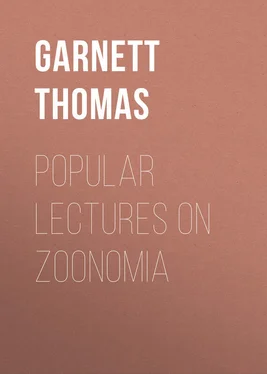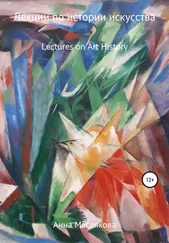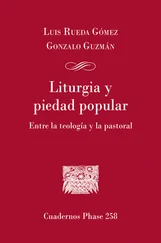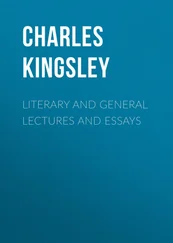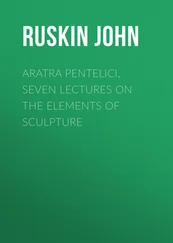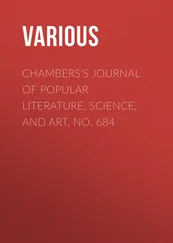Thomas Garnett - Popular Lectures on Zoonomia
Здесь есть возможность читать онлайн «Thomas Garnett - Popular Lectures on Zoonomia» — ознакомительный отрывок электронной книги совершенно бесплатно, а после прочтения отрывка купить полную версию. В некоторых случаях можно слушать аудио, скачать через торрент в формате fb2 и присутствует краткое содержание. Жанр: Биология, foreign_antique, foreign_prose, на английском языке. Описание произведения, (предисловие) а так же отзывы посетителей доступны на портале библиотеки ЛибКат.
- Название:Popular Lectures on Zoonomia
- Автор:
- Жанр:
- Год:неизвестен
- ISBN:нет данных
- Рейтинг книги:4 / 5. Голосов: 1
-
Избранное:Добавить в избранное
- Отзывы:
-
Ваша оценка:
- 80
- 1
- 2
- 3
- 4
- 5
Popular Lectures on Zoonomia: краткое содержание, описание и аннотация
Предлагаем к чтению аннотацию, описание, краткое содержание или предисловие (зависит от того, что написал сам автор книги «Popular Lectures on Zoonomia»). Если вы не нашли необходимую информацию о книге — напишите в комментариях, мы постараемся отыскать её.
Popular Lectures on Zoonomia — читать онлайн ознакомительный отрывок
Ниже представлен текст книги, разбитый по страницам. Система сохранения места последней прочитанной страницы, позволяет с удобством читать онлайн бесплатно книгу «Popular Lectures on Zoonomia», без необходимости каждый раз заново искать на чём Вы остановились. Поставьте закладку, и сможете в любой момент перейти на страницу, на которой закончили чтение.
Интервал:
Закладка:
Anatomical injections prove, that the last branches of the arteries terminate in the beginning of veins; but it is the opinion of many celebrated physiologists, that the arteries carry the blood to the different parts of the body to nourish them, and that the veins commence by open mouths, which absorb or suck up what is superfluous, and return it back to the heart.
From what has been said, it must be evident that there is a considerable resemblance between the circulation of the blood in the animal body, and the circulation of the aqueous fluid on the surface of the globe. In the latter case the water is raised from the ocean, by the heat of the sun, and poured down upon the dry land, in minute drops, for the nourishment and economy of its different parts. What is superfluous is collected into little rills; these meeting with others, form brooks; the union of which produce rivers, that conduct the water to its original source, from which it is again circulated.
In the same manner, the blood is sent by the heart to different parts of the body, for the nourishment and economy of its different parts; what is superfluous is brought back by veins, which, continually uniting, form those large trunks, which convey the vital fluid to the heart.
The blood does not circulate, however, in the manner which I have mentioned, in all parts of the body; for that which is carried by arteries to the viscera, serving for digestion, such as the stomach, bowels, mesentery, omentum, and spleen, is collected by small veins which unite into a large trunk called the vena portarum; this vein enters the liver, and is subdivided in it like an artery, distributing through the liver a great quantity of blood, from which the bile is secreted: and, having served this purpose, the blood is collected by small veins; these unite and form the hepatic vein, which pours the blood into the vena cava, to be conducted to the heart.
The reason of this deviation, is probably, to diminish the velocity of the blood in the liver, for the secretion of the bile; which could not have been effected by means of an artery.
The force which impels the blood, is, first, the contraction of the heart, which propels the blood into the arteries with great velocity; but this is not the only force concerned in keeping up the circulation; this is evident, from the diminished heat, and weakened pulse, in a paralytic limb, which ought not to take place, if the blood were propelled merely by the action of the heart.
The arteries are possessed of an elastic and muscular power, by means of which they contract when they are distended or stimulated. It is however by the muscular power alone, that they assist in propelling the blood; for the elasticity of their coats can serve no other purpose than preserving the mean diameter of the vessel. If we suppose the arteries to be dilated by the blood, poured into them by the heart, they will, by their contraction, as elastic tubes, undoubtedly propel the blood: but supposing them to be perfectly elastic, the force of the heart will be just as much diminished in dilating them as the force of the blood is increased by their contraction. We are not however acquainted with any substance perfectly elastic, or which restores itself with a force equal to that with which it was distended: hence the elastic power of the arteries will subtract from, instead of adding to, the power of the heart. It is evident, therefore, that it must be by the muscular power of the arteries, which causes them to contract like the heart, that they propel the blood.
That such is the case, appears from the muscular structure of the arteries observed by anatomists; as also from the effects of mechanical irritation of their coats, which causes them to contract; this is likewise evident from the inflammation produced by the application of stimulating substances to particular parts; for instance, cantharides and mustard. It appears likewise, from the secretion in some parts being preternaturally increased, while the motion of the general mass of the blood continues unaltered.
The contraction of the arteries always propels the blood towards the extreme parts of the body: this must necessarily happen, because the valves at the origin of the arteries prevent its return to the heart, it must therefore move in the direction in which it finds least resistance.
If it were not for this muscular power of the arteries, the force of the heart would not alone be able to propel the blood to the extreme parts of the body, and overcome the different kinds of resistance it has to encounter. Among the causes that lessen the velocity of the blood, may be mentioned the increasing area of the artery; for it was before observed, that the sum of the cavities of the branches from any trunk exceeded the cavity of the trunk: and from the principles of hydrostatics, the velocities of fluids, propelled by the same force, in tubes of different diameters, are inversely as the squares of the diameters, so that in a tube of double the diameter, the velocity will only be one fourth; in one of the triple, only one ninth: and since the arteries may be looked upon as conical, it is evident that the velocity of the blood must be diminished from this cause.
The curvilinear course of the arteries likewise gives considerable resistance; for at every bending the blood loses part of its momentum against the sides; and this loss is evidently proportioned to the magnitude of the angle, at which the branch goes off. Convolutions are frequently made, in order to diminish the force of the blood in particular organs; this is especially the case with the carotid artery before it enters the brain.
The angles which the ramifications of the arteries make, are greater or more obtuse nearer the heart, and more acute as the distance increases; by which means the velocity of the blood is rendered more equal in different parts.
The anastomosing or union of different branches of arteries, likewise retards the velocity of the blood, the particles of which, from different vessels, impinging, disturb each other's motion, and produce a compound force, in which there is always a loss of velocity: and it is evident, from the composition of forces, that this loss must be proportioned to the obliquity of the angle at which the vessels unite.
The adhesion of the blood to the sides of the vessels, likewise causes a loss of velocity in the minuter branches, which may be owing to a chemical affinity: the viscidity or imperfect fluidity of the blood is another retarding cause. All these causes united, would render it impossible for the heart to propel the blood with the velocity with which it moves in the very minute branches of the arteries, if these arteries were not endowed with a living muscular power like the heart, by which they contract and propel their contents.
In the veins, the motion of the blood is occasioned partly by the vis a tergo, and partly by the contraction of the neighbouring muscles, which press upon the veins; and these veins being furnished with valves, the return of the blood towards the arteries is prevented; it must therefore move towards the heart.
That the contraction of the muscles of the body tends very much to promote the circulation of the blood, is evident, from the increase of the circulation from exercise, and likewise from the languid motion of the blood in sedentary persons, and those given to indolence. Hence we may account for the different diseases to which such persons are subject, and know how to apply the proper remedies. Hence likewise, we see the reason why rest is so absolutely necessary in acute and inflammatory diseases, where the momentum of the blood is already too great.
It has been doubted by anatomists, whether the veins were possessed with muscular power; but this seems now to be confirmed. Haller found the vena cava near the heart to contract on the application of stimulants, though he could see no muscular fibres; these, however, have been discovered by succeeding anatomists.
Читать дальшеИнтервал:
Закладка:
Похожие книги на «Popular Lectures on Zoonomia»
Представляем Вашему вниманию похожие книги на «Popular Lectures on Zoonomia» списком для выбора. Мы отобрали схожую по названию и смыслу литературу в надежде предоставить читателям больше вариантов отыскать новые, интересные, ещё непрочитанные произведения.
Обсуждение, отзывы о книге «Popular Lectures on Zoonomia» и просто собственные мнения читателей. Оставьте ваши комментарии, напишите, что Вы думаете о произведении, его смысле или главных героях. Укажите что конкретно понравилось, а что нет, и почему Вы так считаете.
